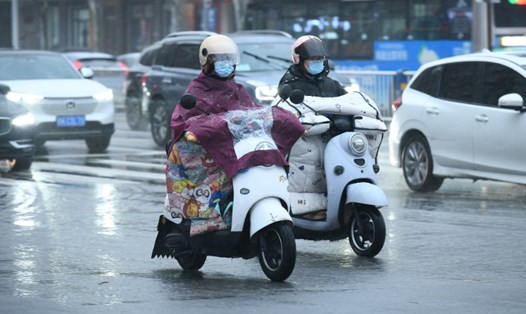China's Shanghai is suffering a prolonged period of severe weather as the aftermath of Typhoon Pulasan continues to be combined with cold air from the north.
China Daily reported that Typhoon Pulasan made landfall in Shanghai on the night of September 20, marking the second time the city has been hit by a typhoon in a week.
With the convergence of cold air from the north, Shanghai residents are preparing for further challenges amid heavy rain and disruption.
Pulasan, China's 14th typhoon of the year, made landfall in Shanghai's Fengxian district at 9:45 p.m. on September 20 with maximum sustained winds of 83 km/h near the center. Typhoon Pulasan made its first landfall in Dai Son district, Zhejiang province.
The impact of the storm was huge, exacerbating the already fragile situation after Typhoon Bebinca, the 13th typhoon of the year, devastated Shanghai just a few days earlier.
The pouring rains caused by Typhoon Pulasan have submerged Shanghai, with heavy to very heavy rain affecting the entire city. The areas affected by the storm were particularly severe - Dong Street and Phung Hien - which had to bear the most severe consequences of the storm.
Notably, Pengzhen Water Station in the East recorded heavy rainfall of up to 308mm in 6 hours, while Yangjiazhai Meteorological Observatory in Situan recorded 327.7mm, marking a historic rally not seen since 1978 - the Shanghai Meteorological Agency said.
The consequences of the downward rain occurred quickly and widely, causing 334 schools across Shanghai to close.
In addition, neighboring cities in Jiangsu Province, including Changzhou, Wuji and Tianjin in Taizhou, have taken preventive measures by closing classes to protect students' health after Typhoon Pulasan made landfall.
As Typhoon Pulasan weakens and moves northeast, winds and rain gradually decrease in Shanghai. However, the meteorological agency warned of the possibility of heavy rain again over the weekend, due to the prolonged influence of Pulasan and cold air from northern China, raising concerns about the possibility of flooding and disruption in the Yangtze River Delta.
Meanwhile, the Vietnam National Center for Hydro-Meteorological Forecasting said that on September 21, the cold air mass in the north is continuing to move south.
It is forecasted that around the night of September 21 and early morning of September 22, this cold air mass will affect the Northeast region, then affect most of the Northwest region and some places in the North Central region. The wind changes direction to northeast inland at level 3, coastal areas at level 4-5.
On September 22-23, the weather will turn cool in the North and Thanh Hoa, and some mountainous areas in the North will be cold. During this cold air mass, the lowest temperature in the North and Thanh Hoa is generally from 20-23 degrees, in mountainous areas it is below 19 degrees.








